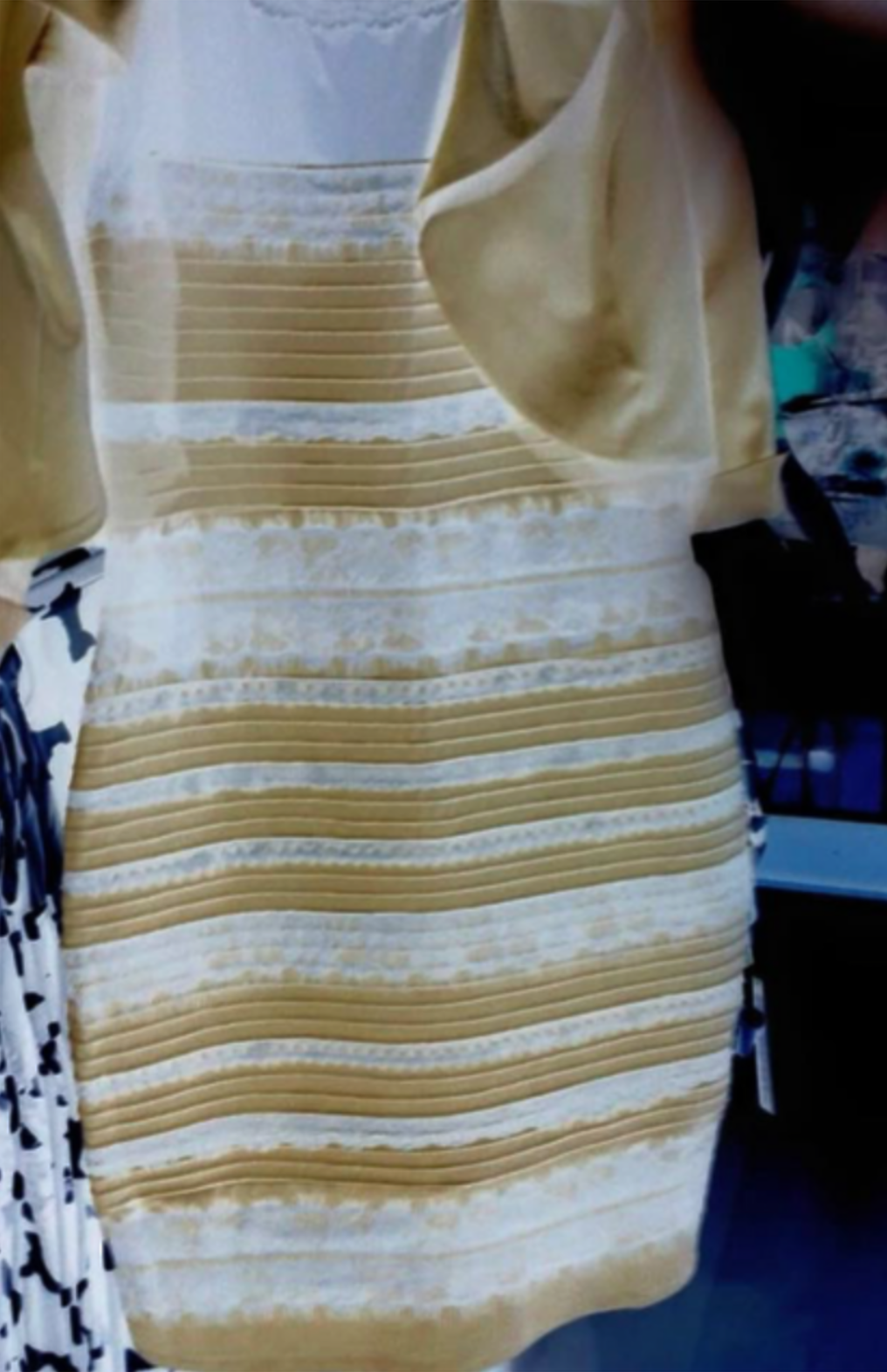Remember that time you scrolled through your social media feed and saw two photos of a dress, the world seemingly dividing itself into two camps – people who saw it as white and gold, and others who swore it was blue and black? This, my friends, is the infamous “color of the dress” test. In 2015, a seemingly innocuous photo of a dress sparked a global phenomenon, a social media frenzy that illuminated the intricate workings of human perception and its susceptibility to bias.

Image: picnicenglish.com
This seemingly simple dress ignited a debate that transcended fashion and plunged into the depths of human biology and psychology, showcasing the power of perception and the fascinating complexities of our brains. But what exactly is the color of the dress test, and why did it capture the world’s attention so profoundly? Join us as we dive into the fascinating world of color perception and uncover the mystery behind this captivating optical illusion.
A Dress, a Photo, and a Global Divide
The dress, a simple garment captured in a photograph, became an instant icon in 2015, dividing the internet into passionate factions. Some saw it as a striking white and gold, while others perceived it as a classic blue and black. This bewildering division, so stark for something seemingly so straightforward, sparked a wave of curiosity and debate. It ignited conversations about perception, bias, and the intricate nature of our visual experience.
The debate surrounding the dress wasn’t simply a matter of taste or preference. The profound disparity in perception ignited a scientific curiosity, prompting researchers and scientists to investigate the underlying factors contributing to the phenomenon. The “color of the dress” test became a window into the complexities of human vision and a platform for understanding how our brains process visual information.
The Science Behind the Dress: Why We See Different Colors
The magic, or perhaps the science, behind the dress lies in the interplay of color perception, the impact of lighting, and the inherent biases in our visual processing.
-
Color Perception: Our eyes have receptors sensitive to different wavelengths of light. These receptors send signals to our brains, where they are interpreted as color. The colors we perceive are not necessarily the “true” colors of an object but rather our brains’ interpretation based on the light reflected off the surface.
-
Lighting Effects: The lighting conditions under which the dress was captured played a crucial role in the perception discrepancy. The dress was photographed in a setting that likely had limited light sources, which can lead to variations in how color is perceived. Our brains try to compensate for varying lighting conditions, which can lead to inconsistencies in color interpretation.
-
Individual Differences: Our brains process visual information differently. Factors like age, gender, eye health, and even the degree of fatigue can influence our perception of color. These individual differences can contribute to the varied interpretations of the dress’s color.
-
Prior Experiences and Expectations: Our past experiences and expectations can also influence our perceptions. If someone recently saw several photos featuring primarily blue and black dresses, they might be more inclined to perceive the dress as blue and black, even if the lighting conditions suggest a different color.
Beyond the Dress: The Broader Implications
The “color of the dress” test transcends fashion debates and reveals profound insights into human perception and the intricate workings of our brains. It highlights:
-
The Subjectivity of Perception: This test illustrates that what we see is not always objective reality. Our perceptions are shaped by a complex interplay of factors, including lighting, individual differences, and past experiences.
-
The Role of Context and Bias: Our brains are constantly attempting to make sense of the world around us, often relying on shortcuts and biases. The dress test exemplifies how these biases can influence our perceptions, often leading to significant differences in interpretation.
-
The Power of Visual Illusion: The dress test is a classic example of a visual illusion, demonstrating how our brains can be tricked into seeing things that are not truly there. This phenomenon offers valuable insights into the limitations of our perception and the potential for misrepresentation in visual information.

Image: www.zenia.com
Learning from the Dress Test
The “color of the dress” phenomenon presents a valuable opportunity for us to become more aware of our own biases and the limitations of our perceptions. It encourages us to approach visual information with a critical eye and to consider the underlying factors influencing our understanding.
Here are some practical takeaways from the dress test:
-
Be Aware of Lighting: When viewing images, consider the lighting conditions under which they were captured. Recognize how lighting can affect color perception and potentially lead to discrepancies in interpretation.
-
Acknowledge Individual Differences: Embrace the fact that people perceive things differently, recognizing that our perceptions are shaped by unique experiences and individual cognitive variations.
-
Don’t Take Things at Face Value: Remain vigilant about visual information and consider potential biases or misinterpretations. Be willing to question your perceptions and explore alternative perspectives.
What Is The Color Of The Dress Test
Conclusion: The Dress Lives On
The “color of the dress” test may have faded from the spotlight, but its legacy continues to resonate in the realm of visual perception and our understanding of human cognition. This simple photograph continues to serve as a powerful reminder of the complexities of vision, the impact of bias, and the importance of critical thinking in interpreting the world around us. The next time you encounter a visually striking image or a seemingly straightforward photograph, take a moment to consider the factors that might be influencing your perception. Remember the dress, and embrace the wonder, complexity, and, at times, the humor, inherent in the human experience of visual perception.






